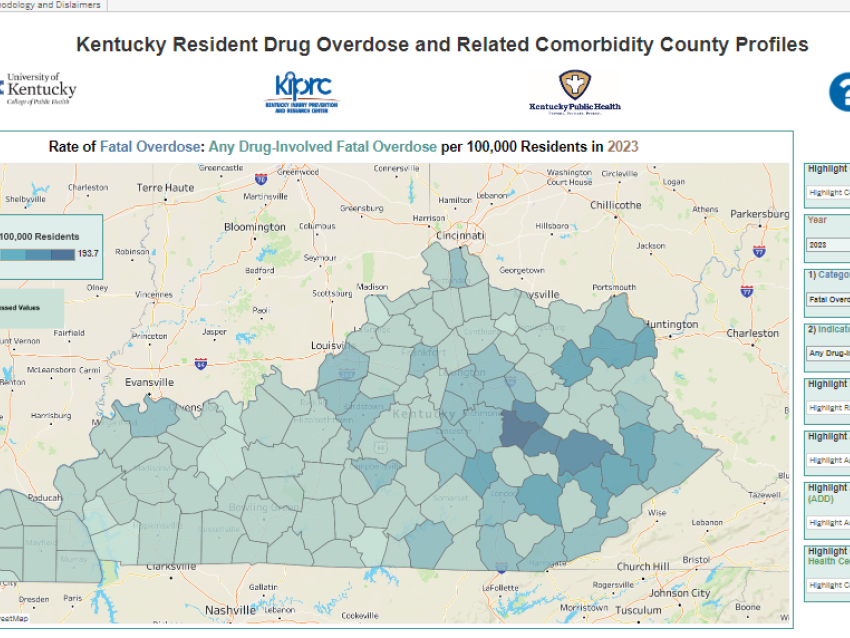
KIPRC Launches Updated Drug Overdose Dashboard
In response to Kentucky’s ongoing drug overdose crisis, the Kentucky Injury Prevention and Research Center (KIPRC) has launched the updated Drug Overdose and Related Comorbidity County Profiles Dashboard. This comprehensive tool provides policymakers, health professionals, and local communities with access to crucial drug overdose data, allowing them to make informed decisions and implement targeted interventions aimed at reducing overdose deaths and addressing related health issues.
The enhanced dashboard provides clear insights into overdose incidents across all 120 Kentucky counties, aiming to bridge gaps in public health responses.
“This dashboard is designed to present data in a way that’s accessible to our stakeholders, particularly those who may not be familiar with this type of information,” said Mira Mirzaian, a key contributor to the project and epidemiologist at KIPRC. “We’ve worked to make it as easy to read and navigate as possible. One of the major improvements we made is compressing all the data into a single tab. It’s now a one-stop shop where people can quickly access everything they need in one place.”
Its user-friendly interface highlights disparities across counties, identifying trends that can effectively guide health interventions.
In addition to consolidating the data onto one tab, further updates to the dashboard to improve accessibility and user experience include:
- New visualizations: In addition to the main map and data tables from the previous versions, new bar graphs and line charts have been added for a better visual representation of trends over time. The charts can be downloaded in multiple formats, making the data easier to use in reports or presentations.
- Expanded data: The dashboard now includes eight years of data (2016 through 2023), compared to the five years of the dashboard’s previous iteration, allowing for a more comprehensive view of trends.
- Customization options: Users can filter by categories such as rural vs. urban counties, community mental health centers, or area development districts, offering more granular insights for specific regions.
- New categories: Methamphetamine and fentanyl data, which weren’t available in earlier versions, have been added following the introduction of an ICD-10 code for methamphetamine in 2023. Additionally, EMS data, such as patient refusal to transport, has also been integrated.
“This update makes it easier to digest intricate and important information, allowing stakeholders to quickly see the trends happening over time and within their community, without having to dive deep into annual reports or get overly granular,” said Mirzaian.
The dashboard significantly improves accessibility for a range of stakeholders, including public health officials, local governments, and healthcare providers. Users can filter data by geographic regions and administrative areas, ensuring that the dashboard remains relevant for both local and statewide applications.
“We want to make sure that the people who need this information can actually use it to make impactful decisions. It's all about accessibility and practicality,” said Mirzaian.
To access the updated Drug Overdose and Related Comorbidity County Profiles Dashboard, visit here.
KIPRC is a unique partnership between the Kentucky Department for Public Health (DPH) and the University of Kentucky’s College of Public Health. KIPRC serves both as an academic injury prevention research center and as the DPH’s designee or “bona fide agent” for statewide injury prevention and control.